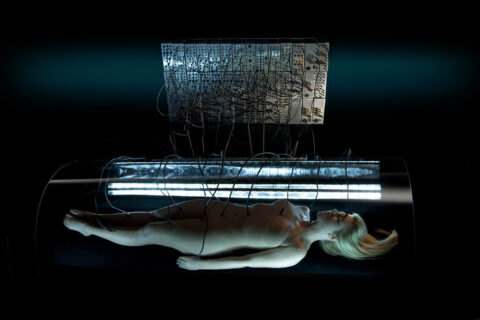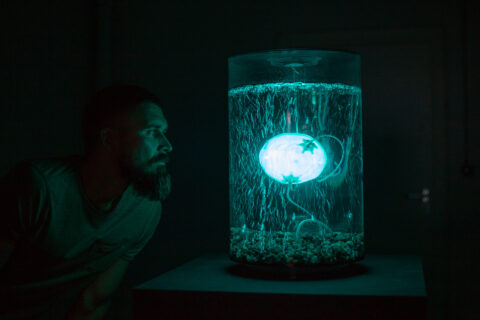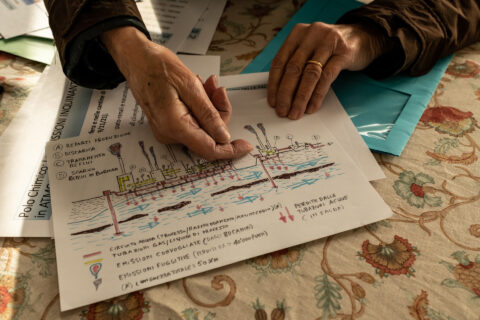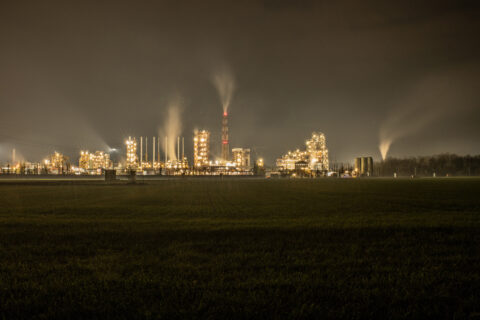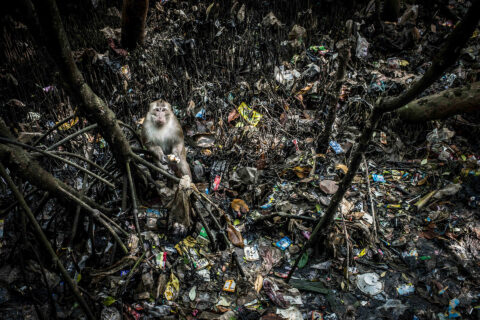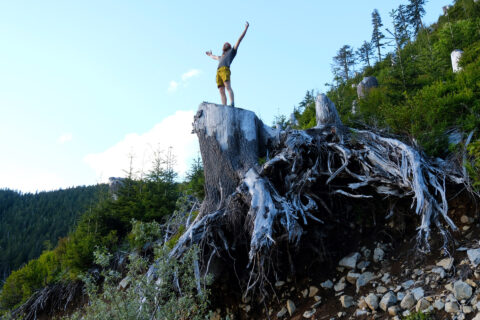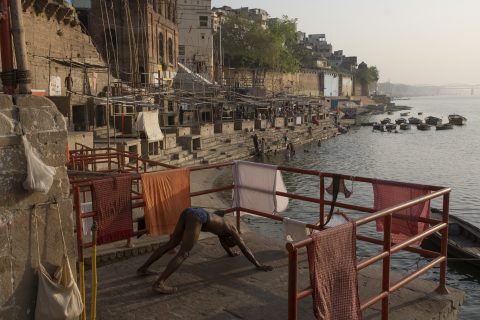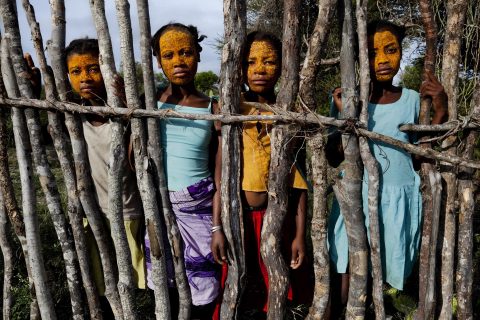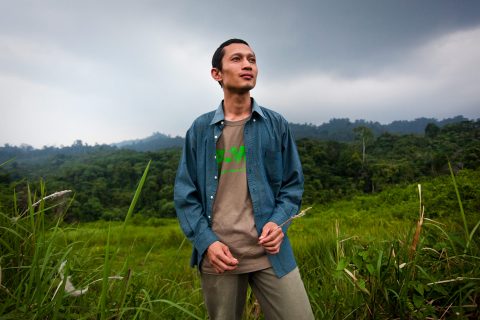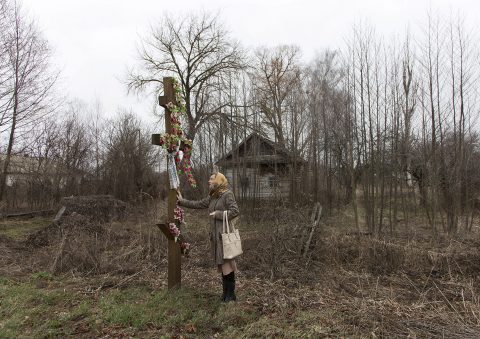PFAS, THE EUROPEAN MAP OF ETERNAL POLLUTANTS
Read our series on the case of Spinetta Marengo chemical center, one of the hot spots of contamination of PFAS in Italy.
The Solvay Group has had a presence in Italy for more than a century. In 2002 it acquired Ausimont and the Spinetta Marengo plant, just outside Alessandria, from Montedison. This is one of the most important chemical production sites in Europe. In more than 20 years, the Belgian multinational company Solvay has invested more than 600 million euros on the Alessandria Chemical center, including 280 million to renovate the facilities of this major production site.
Solvay’s presence in Italy is not limited only to the Alessandria Plant, but has as many as six production sites, including the famous Rosignano Solvay plant in the province of Livorno and the important Bollate research center near Milan. The company files about eighty new patents each year. One of Solvay’s exclusive patents is cC6O4, a compound considered a next-generation PFAS, produced and used at Spinetta Marengo as a substitute for PFOA, a substance that Solvay has used for some years as an adjuvant but has never directly produced.
In Spinetta Marengo, Solvay produces materials used to make a huge number of everyday items in a variety of sectors, from electronics to medical instruments. In Italy, Solvay invests more than 100 million euros in its sites each year. Solvay’s plants in our country had a turnover of 1,676 million euros in 2021.
In Alessandria, Solvay is a recognized presence and, for most of the resident population, worthy of esteem. The company invests heavily in the training of young people, both during university and, earlier, in their high school years. A few years ago, for example, the company helped build a new organic chemistry laboratory at the “Alessandro Volta” Institute in Alessandria.
But Solvay’s reputation threatened to crack when, in 2019, the Court of Cassation made the culpable environmental disaster convictions of three Solvay executives final. The trial ended after a long and complex journey. The company, to this day, is critical of the final ruling.
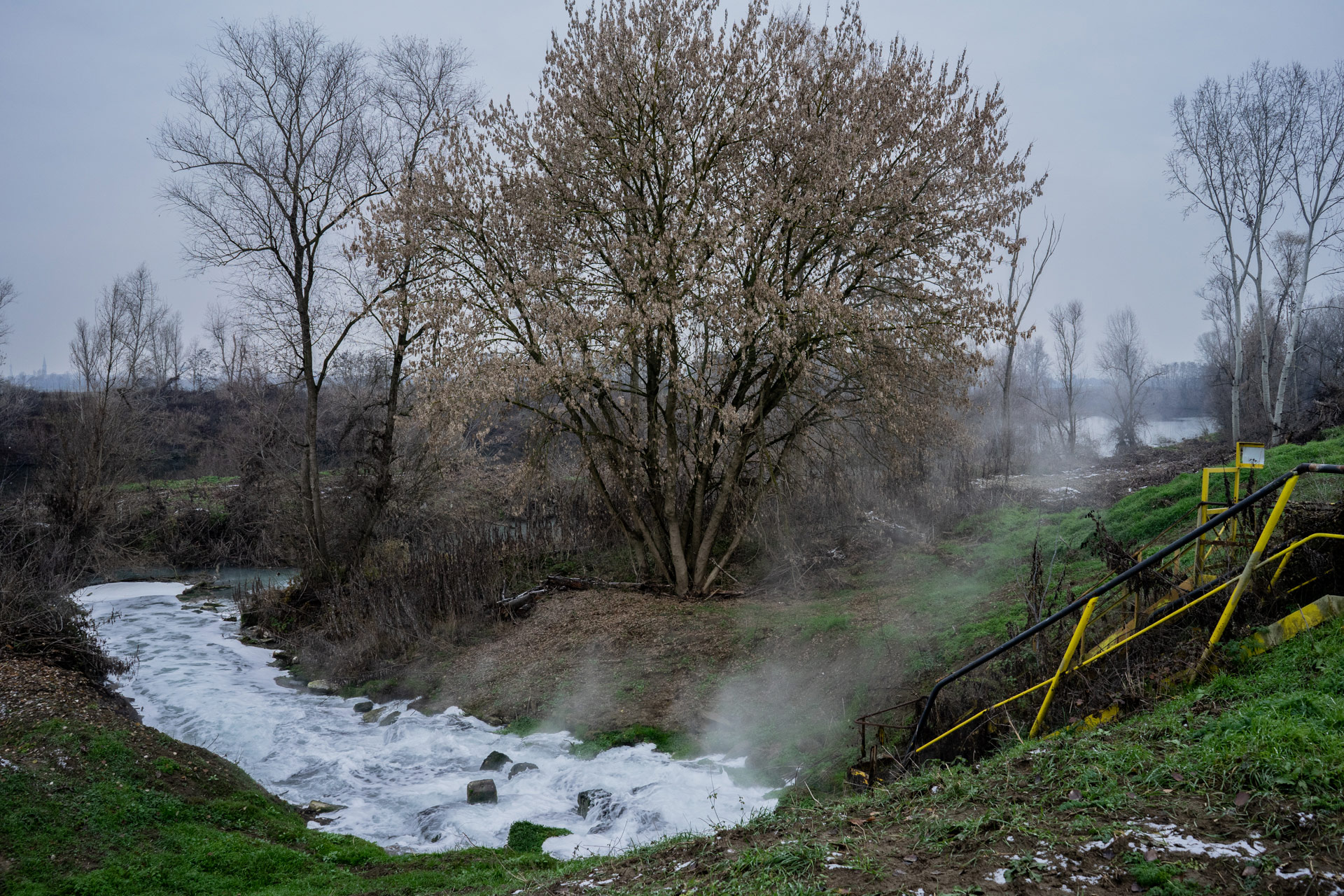
Vapors and foam come out of sewage discharge inside the Bormida River in Spinetta Marengo. Alessandria, Italy, December 13, 2022.
the charge of environmental disaster
In 2008, the presence of hexavalent chromium beyond any legal limit was discovered in the waters of Spinetta Marengo. Investigations by ARPA Alessandria – then directed by Alberto Maffiotti – resulted in a report of a crime, which was forwarded to the Public Prosecutor’s Office. The Public Prosecutor carried out the appropriate investigations, which resulted in charges against Solvay executives and former Ausimont managers.
Originally the indictment was for malicious water poisoning, but in the course of the trial, the legal qualification of the fact changed. The Alessandria Assize Court recognized the criminal liability of three defendants for unnamed negligent disaster. Of the three defendants, one had worked for Ausimont and then for Solvay, the other two only for Solvay. In this particular case, the environmental disaster was an aggravation of historical contamination.
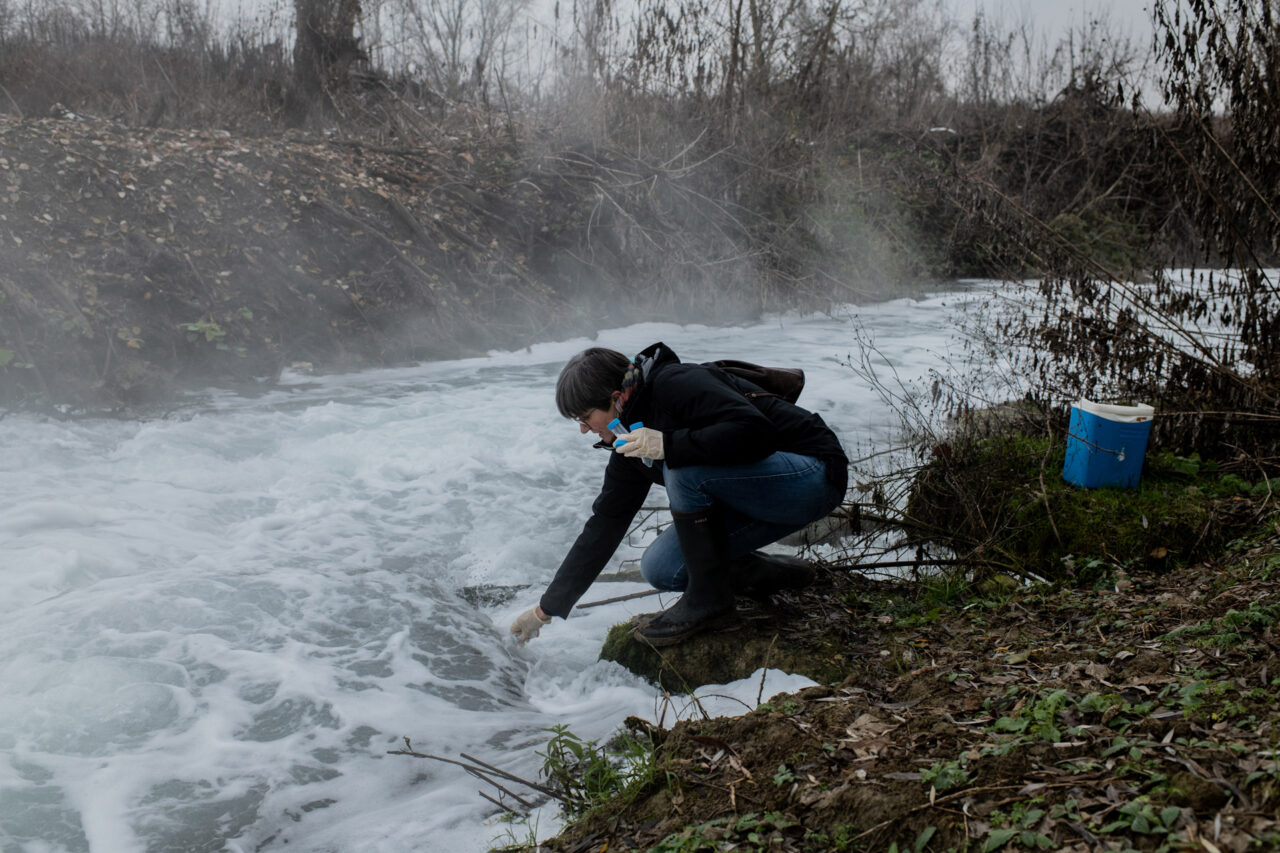
Researcher Sara Valsecchi collects wastewater from the Solvay plant in Spinetta Marengo in order to determine the concentration of PFAS. Valsecchi has never observed such an amount of foam in the wastewater in the previous sampling she has done compared to the one on Dec. 13, 2022. Alessandria, Italy, December 13, 2022.
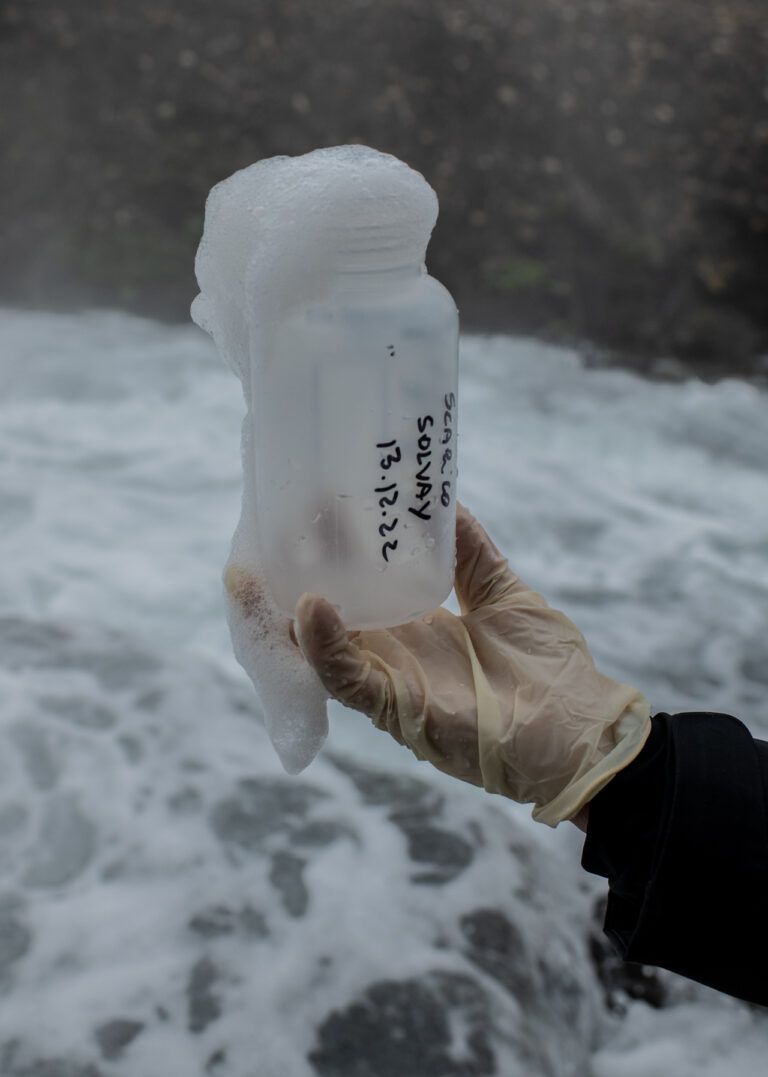
Researcher Sara Valsecchi collects wastewater from the Solvay plant in Spinetta Marengo in order to determine the concentration of PFAS. Alessandria, Italy, December 13, 2022.
On the ground of the chemical center, in fact, there was (and is) noxious waste, the result of past activities and not those of Solvay. It was discovered that these toxic substances were being dissolved and transported not only by rainwater, but also by leaks from the chemical center’s water system, which consisted of some 50 kilometers of aging pipes. These pipes leaked both cooling water and process water, and contributed to carrying pollutants to the groundwater. As a result, the little chemical pipelines were aggravating the contamination. It is on this reconstruction that the final judgment is based-a judgment that the company is challenging.
a ruling criticized
The Solvay Group states that «the ruling established two basic facts. First, it recognized that the water distributed to the citizens of Spinetta Marengo and to the workers at the plant has always complied with all the potability limits established by law. Second, it confirmed that the pollution dates back to at least the 1940s and was caused by others. In addition,» Solvay says, «the ruling excluded any kind of malicious liability, limiting it to that of an exclusively culpable nature. In any case, this is a pronouncement contrary both to the well-established principles of law enunciated by the constant jurisprudence of the Court of Cassation itself, and to the fundamental community principles placed to protect human rights, which Solvay has challenged before the European Court of Human Rights in Strasbourg before which the appeal is pending.»
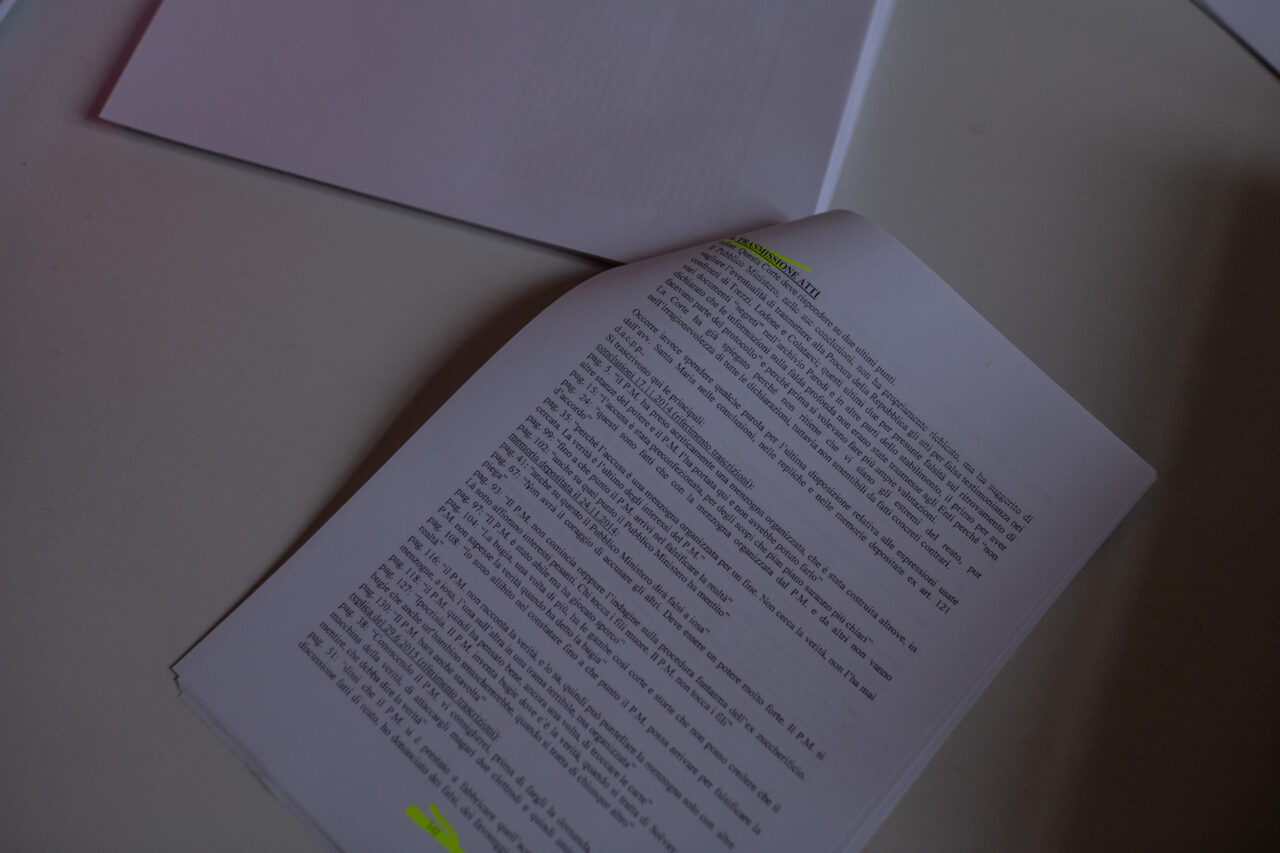
Documents from the first environmental pollution lawsuit Solvay lost in 2019. Alessandria, Italy, January 17, 2023.
On the responsibilities of the previous management, the Arbitration Court of the International Chamber of Commerce (ICC) also ruled, holding Edison liable for violating the environmental representations and warranties contained in the contract by which Solvay acquired Ausimont. During the trial, Solvay defended itself vigorously on both technical and legal grounds. The company claims that «during the negotiations for the acquisition, Edison provided Solvay with a falsified picture of the state of environmental contamination at the Spinetta and Bussi sites, misleading the Company as to the true extent and consistency of contamination at the two sites.»
According to Solvay, the situation at Spinetta Marengo was the cause of past pollution, while the company’s activities had been directed at solving a past problem.
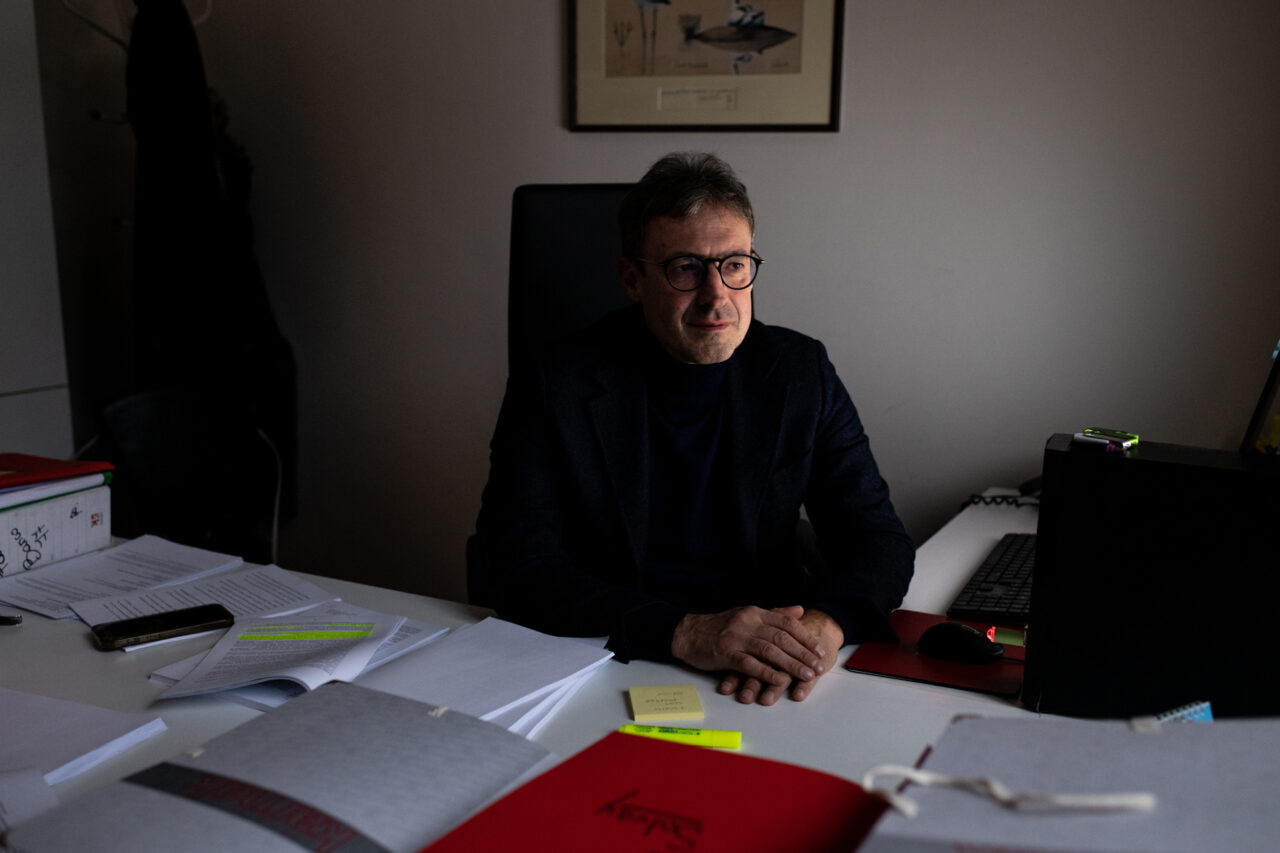
Vittorio Spallasso, in his office, reads some documents from the first environmental pollution lawsuit Solvay lost in 2019. Alessandria, Italy, January 17, 2023.
Question of pipes
«It is an argument, however, that the judges did not agree with, essentially because of the presence of these leaks from the pipes. So on the one hand they ascertained the historical contamination, the accumulation of substances generated when Solvay was not there. On the other they identified the current conduct of failure to maintain that allowed the perpetuation of the contamination,» explained Vittorio Spallasso, defense attorney for the plaintiffs during the trial. «I remember that the attorney general used the paradox that if this continuation of pollution was permissible, then on a pollution site we would all be justified in continuing to pollute. Certainly Solvay’s defense was effective but, finally, there was a reality that defeated them, which was the actuality of this aggravation of historical contamination.»
Again, however, Solvay asserts a different reality. «The plant’s underground piping was built following the historical development of the different plants and extends for a few tens of kilometers. Solvay, since it took over the management of the site, has undertaken extensive verification, maintenance and replacement of the pipes inherited from the previous management. The entire plant network is the subject of constant prevention, verification and improvement activities.»
discharges, emissions and hydraulic barriers
In 2008, in the aftermath of the discovery of severe and widespread pollution, Solvay had to build a hydraulic barrier to contain and treat contaminated water in the aquifer. Recently, the company has developed a system to monitor groundwater levels, which allow hydraulic barrier flow rates to be quickly adjusted as conditions change. Solvay recently invested 40 million euros to further upgrade water treatment systems to permanently eliminate fluorosurfactant emissions.
Spinetta Marengo’s drinking water – as confirmed by ARPA, researchers, authorities and Solvay – has never had PFAS contamination. The problem, today, would no longer be in the water, but in the air. Sara Valsecchi – a researcher at IRSA, the CNR’s Water Research Institution – also conducts research in the Spinetta Marengo area. She and her colleague, Stefano Polesello, are two of the key figures in the discovery of the very serious PFAS pollution caused by the Miteni chemical company in Veneto.
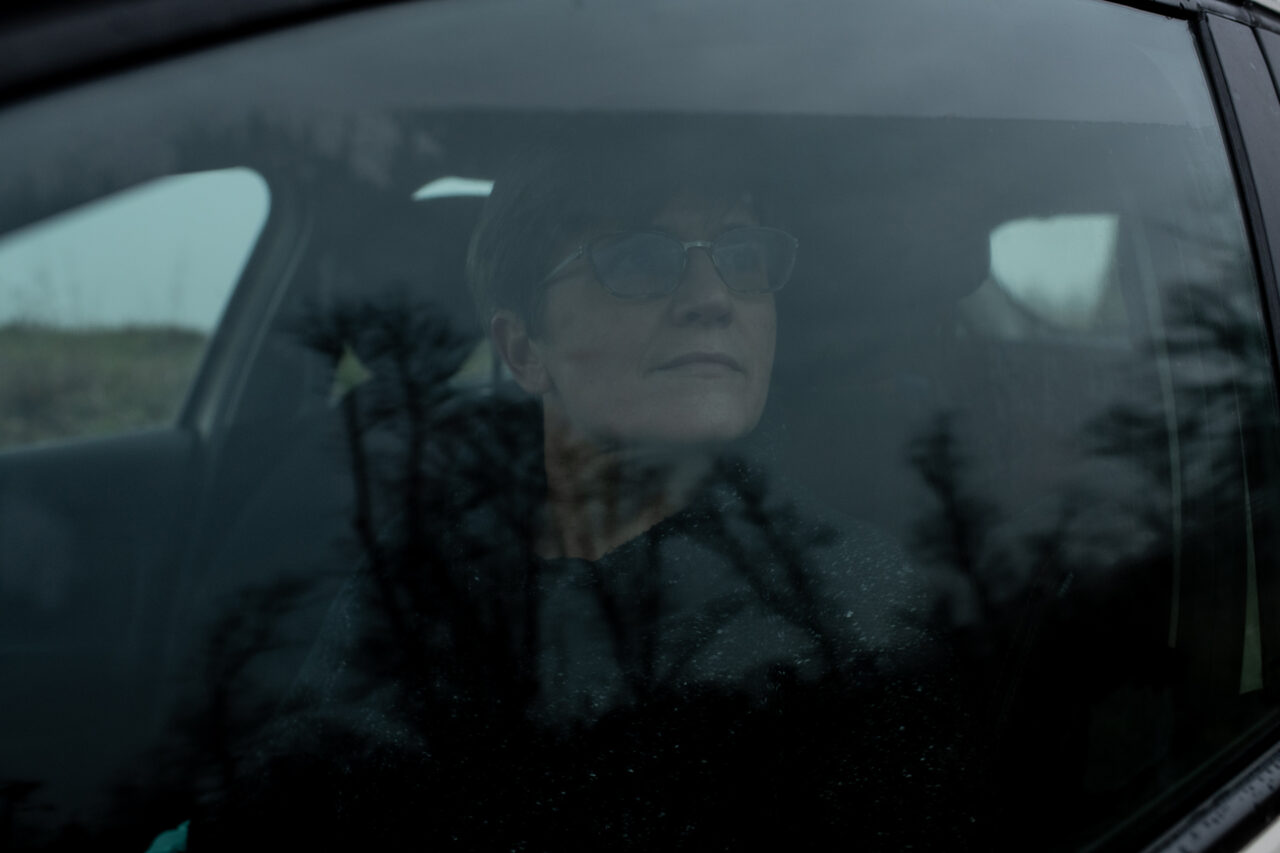
Sara Valsecchi, a researcher at IRSA – CNR, is the scientist who, together with her colleague Stefano Polesello, uncovered the PFAS pollution of groundwater in Trissino (VI) caused by the Miteni plant. Valsecchi studies the concentration of PFAS in wastewater in Spinetta Marengo. Alessandria, Italy, December 13, 2022.
«The interest shifted to air emissions,» Valsecchi explains. «We have started to do some analyses and it has already been noted that the plant emits substances into the atmosphere in non-negligible quantities. There are samples of rainwater that have concentrations equal to those of industrial discharges. That aerosol somehow gets breathed in, certainly settles around the whole area of the plant.»
PFAS are found in the environment and in the air of Spinetta Marengo: it is a fact. Analysis has shown the presence of PFOA, ADV and cC6O4. The latter is found in significant concentrations.
READ ALSO: Everything you need to know about PFAS (in Italian)
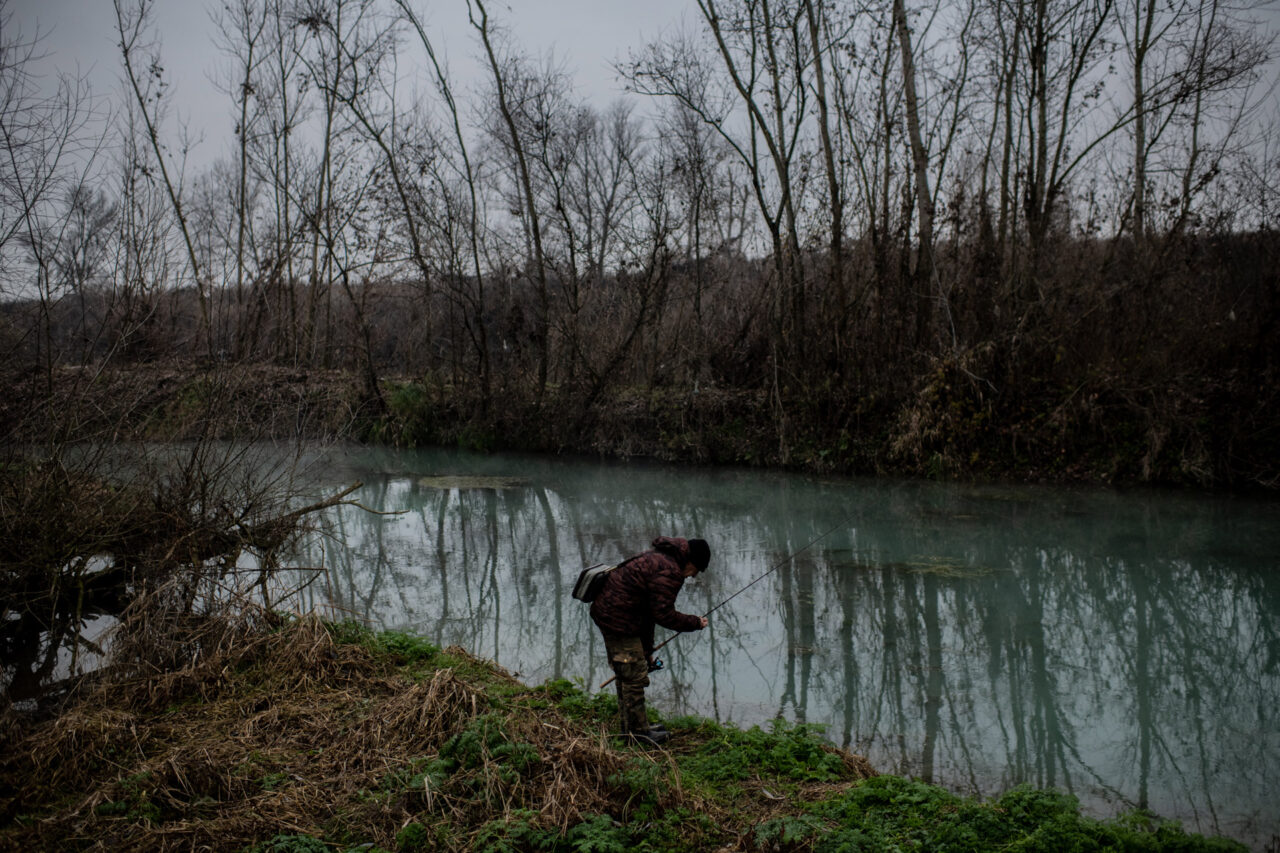
A man fishes in the canal that carries sewage into the Bormida River in Spinetta Marengo. He says finds more fish in the canal because of the warmer temperature. Alessandria, Italy, December 13, 2022.
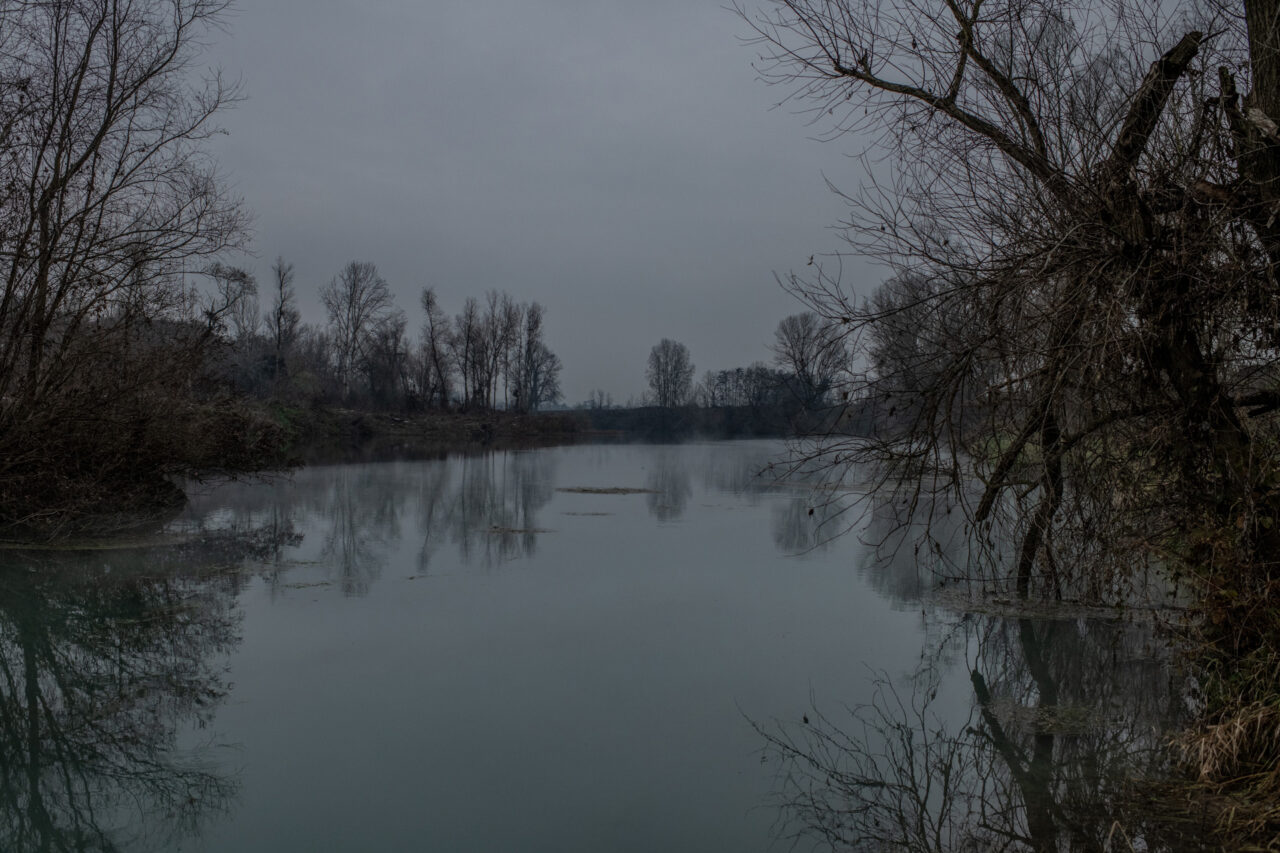
Steam on the surface of the Bormida River in Spinetta Marengo is due to wastewater. The Bormida River enters the Tanaro River a few kilometers downstream of the discharge. The Tanaro subsequently flows into the Po river. Alessandria, Italy, December 13, 2022.
cC6O4, an exclusive pfas in spinetta marengo
Back in 2006, when there was still no specific legislation, Solvay voluntarily joined the international EPA-PFOA Stewardship Program, which called for the total elimination of PFOA use by 2015. During 2013 – two years ahead of the program’s deadline – it completely eliminated the use of PFOA. It replaced it with cC6O4, for the production of which an Integrated Environmental Permit was applied for and approved, which the Province of Alessandria issued on June 24, 2010.
«As part of these new product registration procedures,» the company explains, «cC6O4 has been the subject of some 30 scientific studies at accredited laboratories in Italy, Germany and Switzerland, the results of which are available to the scientific community. The results of the studies have ascertained that cC6O4 does not have the same characteristics as PFOA and is a completely different chemical, possesses a better toxicological profile, is not biopersistent and is not bioaccumulative, is not mutagenic, is not toxic to reproduction, and is not carcinogenic to humans. Moreover, according to even more recent studies, it is rapidly eliminated from the human body.»
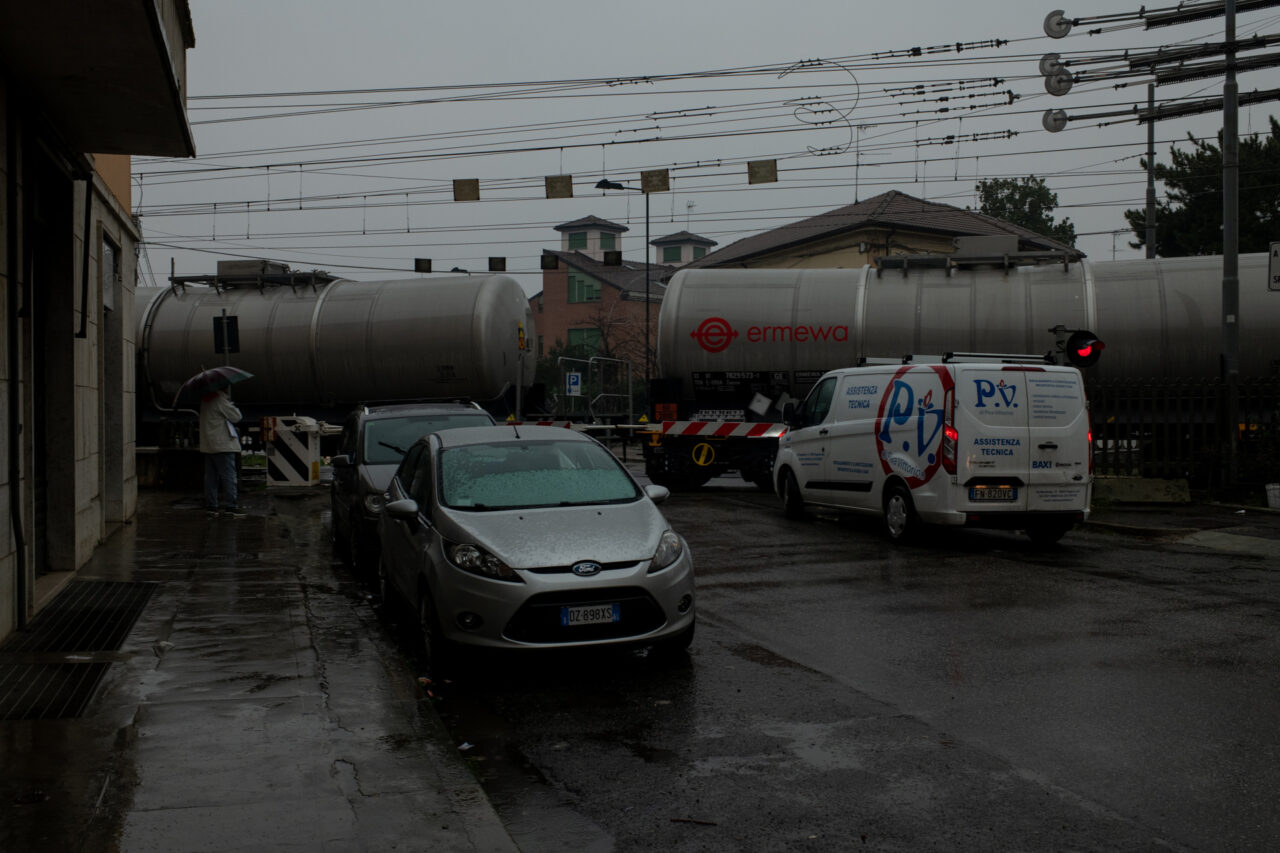
Spinetta Marengo is developed around a central road cut by two railroad crossings that serve the Solvay plant. People say they spend a lot of time each day waiting at railroad crossings because of the many freight trains that arrive and depart from the plant. Alessandria, Italy, December 15, 2022.
As pointed out in the second chapter of this investigation, how a new substance is registered and how it is allowed to be used is the subject of heated debate. The case of cC6O4 makes no distinction. Moreover, the fact that it is a compound produced exclusively by Solvay makes it a tracer, something that generally proves useful in environmental investigations.
Following a complaint, the Alessandria Public Prosecutor’s Office launched a new investigation in 2020, in cooperation with ARPA and the Carabinieri’s Ecological Operations Unit (NOE) in the hypothesis of an indictment for an environmental disaster that continues. The preliminary investigation ended on December 2, 2022, and it is pending whether a new trial will follow.
beyond PFAS
Solvay has stated that it will eliminate the use of fluorosurfactants from its production processes by 2026. cC6O4 will also be decommissioned, after – in recent times – a new permit was applied for and obtained to initiate partial modifications to the existing production line. The request – which, according to the company, involves very little intervention – has been met with skepticism by the public, now fed up after decades of controversy related to the chemical center.
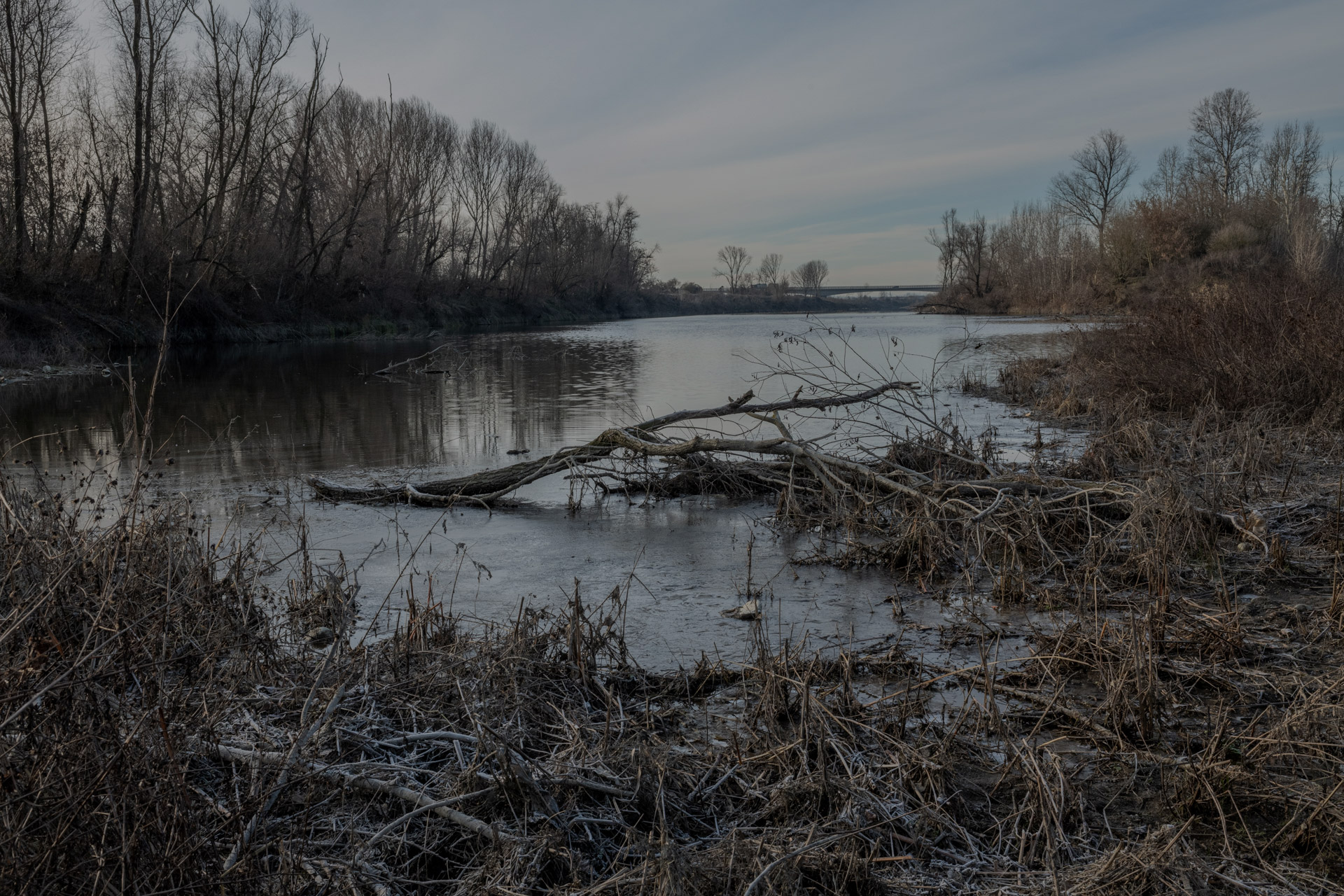
The confluence of the Bormida River into the Tanaro River, which is a tributary of the Po River. This is where PFAS-polluted water from the plant through the Bormida River runs to Italy’s longest river. Alessandria, Italy, January 21, 2023.
The Spinetta Marengo affair highlights – both good and bad – the dynamics in the relationships between public, private and land use. «An industry produces wealth on the territory. But this territory is not its own and it has no right to treat it as if it were part of a plant,» Sara Valsecchi points out, «the water table, for example, is common property, as is a river, as are the shores of the sea. And so the aquifer under a plant must not be polluted. It cannot be managed as if it were a pool, an underlying property. The same thing can be said for the air.»
The Alessandria chemical plant is ready to move beyond the ages. As stated by the company, «the Solvay site Spinetta Marengo does not have an expiration date». The history of this place is full of events that, in some cases, bordered on the absurd and that it was impossible to include in this investigation. Just like PFAS, the factory seems destined to exist for a time for us compared to eternity.
Between environmental disasters, differing interpretations of reality, old and new public health problems, discordant opinions, judgements, contradictions, struggles, debates and omissions, the tale of the Spinetta Marengo chemical plant is an exemplary case of the imperfect dynamics of our capitalist society, in which public authorities struggle to keep up with corporations. But like every day in Spinetta Marengo, the factory siren sounds the end of the shift, fog caresses the landscapes, and the workers go home.
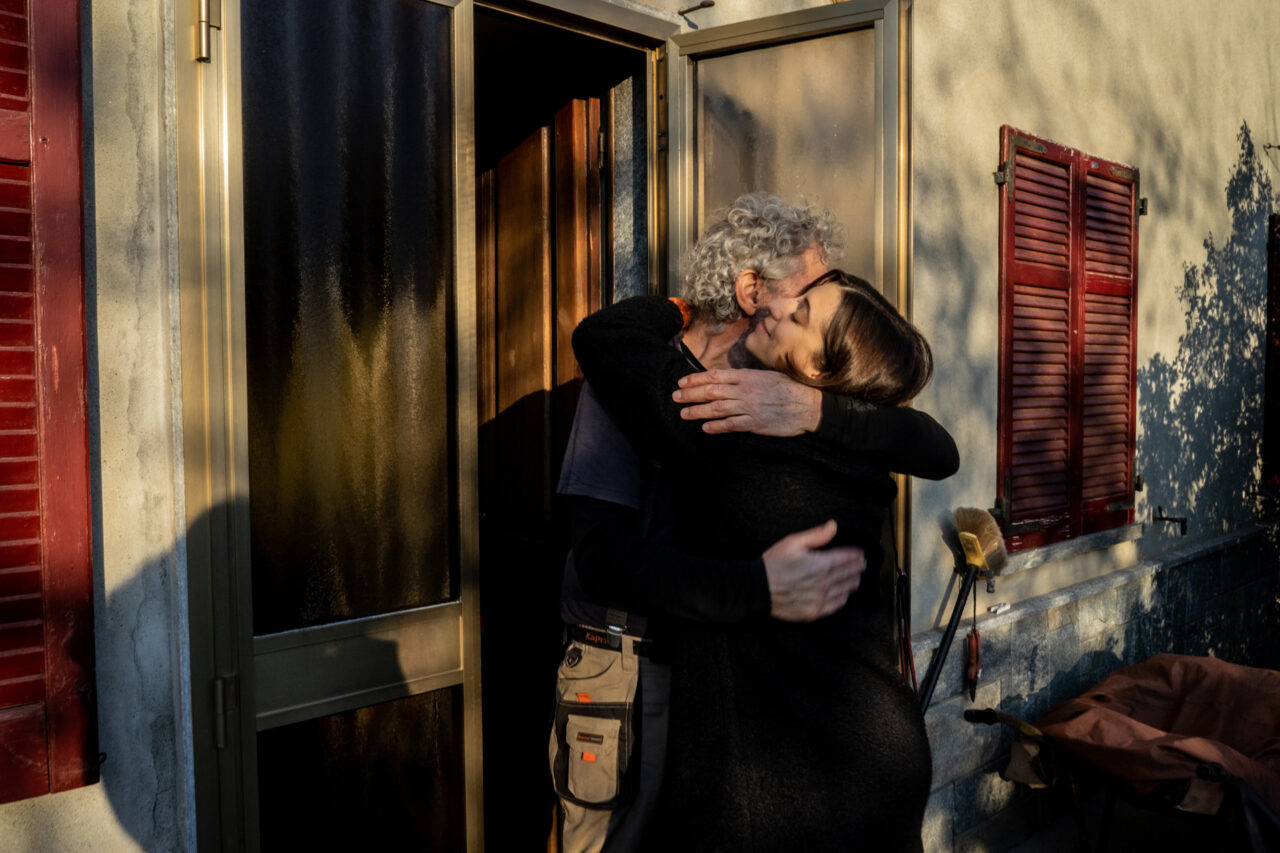
Viola Cereda visits her father Gianfranco Cereda in the house where she was born and raised in Spinetta Marengo. Alessandria, Italy, January 20, 2023.
Read our investigation on PFAS contamination
The following contributed to the publication of this article: Anna Violato, Alfonso Lucifredi, Marta Frigerio, Niccolle Ramirez Vilchez, Francesco Martinelli, Davide Michielin, Natalia Alana.
This investigation is a part of The Forever Pollution Project, a cross border survey in which 18 newsrooms from across Europe participated. A group in addition to RADAR Magazine includes Le Monde (France), Süddeutsche Zeitung, NDR and WDR (Germany), The Investigative Desk and NRC (The Netherlands) and Le Scienze (Italy), and also joined by Datadista (Spain), Knack (Belgium), Deník Referendum (Czechia), Politiken (Denmark), Yle (Finland), Reporters United (Greece), Latvijas Radio (Latvia), SRF Schweizer Radio und Fernsehen (Switzerland), Watershed and The Guardian (United Kingdom).


